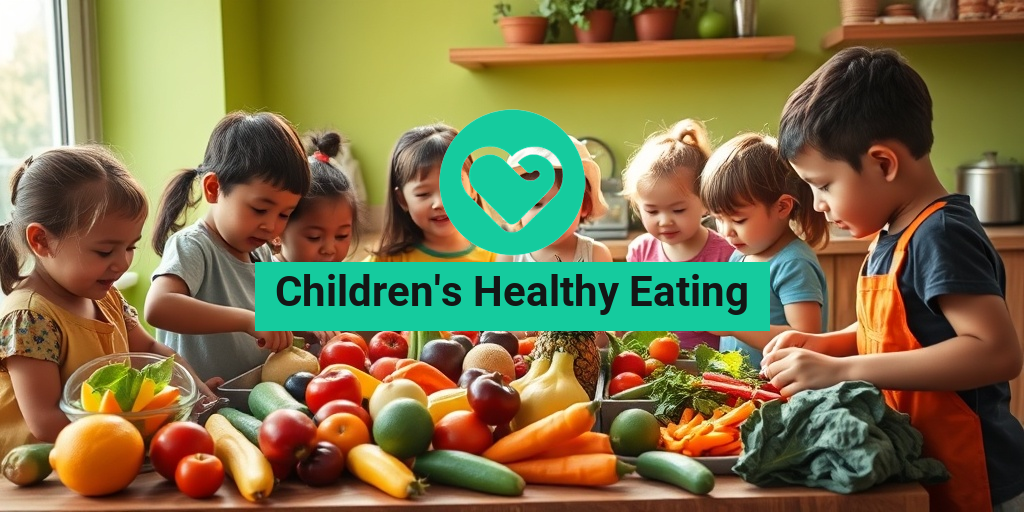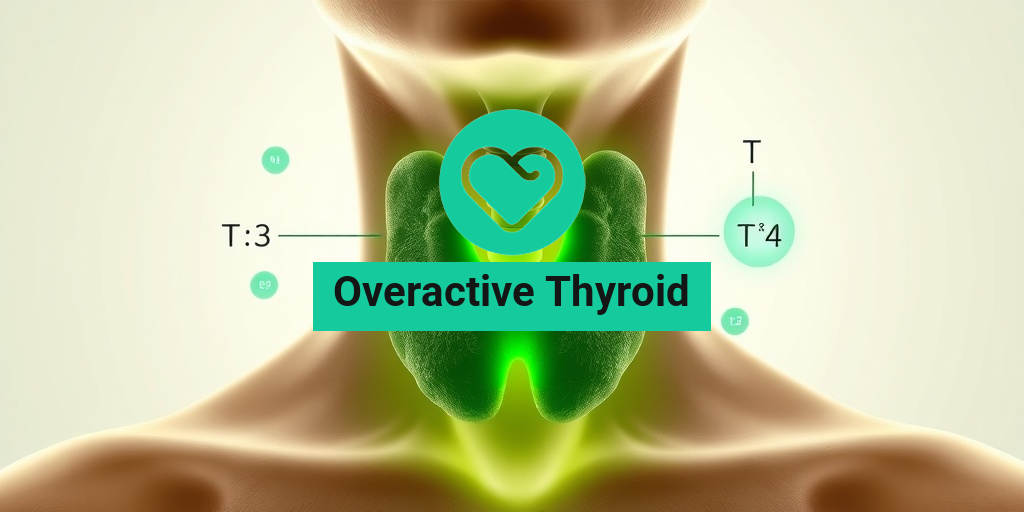What Is Healthy Eating for Kids?
Healthy eating for kids is all about providing a balanced diet that supports their growth, development, and overall well-being. It involves offering a variety of foods that supply essential nutrients, including vitamins, minerals, proteins, carbohydrates, and healthy fats. The goal is to create a nutritionally rich environment that encourages children to develop healthy eating habits from a young age.
The Building Blocks of a Healthy Diet
To understand what constitutes healthy eating for children, it’s important to focus on the following key components:
- Fruits and Vegetables: Aim for a colorful plate! Fruits and vegetables are packed with vitamins, minerals, and fiber. Encourage kids to try different types and colors to make meals visually appealing and nutritious.
- Whole Grains: Foods like brown rice, whole wheat bread, and oats provide essential energy and nutrients. Whole grains are a great source of fiber, which aids in digestion.
- Proteins: Lean meats, fish, eggs, beans, and nuts are excellent sources of protein that help in muscle development and repair.
- Dairy: Low-fat milk, yogurt, and cheese are important for bone health due to their calcium content. If lactose intolerant, consider fortified plant-based alternatives.
- Healthy Fats: Incorporate sources of healthy fats, such as avocados, olive oil, and nuts, which are essential for brain development.
Children’s Healthy Eating Guidelines
Following children’s healthy eating guidelines can help parents and caregivers make informed choices. The USDA MyPlate model is a great resource that illustrates how to balance food groups on a plate. It emphasizes filling half the plate with fruits and vegetables, a quarter with grains, and a quarter with protein, along with a serving of dairy.
Benefits of Healthy Eating
Encouraging healthy eating habits in children comes with a multitude of benefits that extend beyond just physical health. Here are some of the key advantages:
Physical Health
Healthy eating plays a crucial role in maintaining a child’s physical health. A balanced diet helps in:
- Growth and Development: Proper nutrition is vital for children as they grow. It supports their physical development and helps them reach their full potential.
- Immune Function: A diet rich in fruits and vegetables boosts the immune system, helping children fight off illnesses and infections.
- Weight Management: Healthy eating habits can prevent childhood obesity, which is linked to various health issues later in life.
Mental Well-Being
Nutrition also significantly impacts a child’s mental health. A well-balanced diet can lead to:
- Improved Concentration: Foods rich in omega-3 fatty acids, such as fish, can enhance cognitive function and concentration, making it easier for children to focus in school.
- Better Mood: Certain nutrients, like B vitamins and antioxidants, can help regulate mood and reduce anxiety.
Establishing Healthy Habits
By promoting children’s healthy eating habits early on, parents can instill lifelong skills that encourage better food choices. Here are some tips to help:
- Involve Kids in Meal Prep: Let children help in the kitchen. This can make them more interested in trying new foods.
- Lead by Example: Children often mimic their parents’ behaviors. Show them that you enjoy healthy foods.
- Make it Fun: Use creative presentations, like making fruit faces or colorful salads, to make healthy eating exciting.
For more resources on children’s healthy eating, including meal plans and activities, consider visiting Yesil Health AI. They provide evidence-based health answers that can guide you in fostering a healthy eating environment for your children.
In conclusion, establishing a foundation of healthy eating for kids is essential for their physical and mental well-being. By incorporating a variety of nutritious foods and encouraging positive eating habits, we can help our children thrive and develop a lifelong appreciation for healthy eating. 🍏🥦
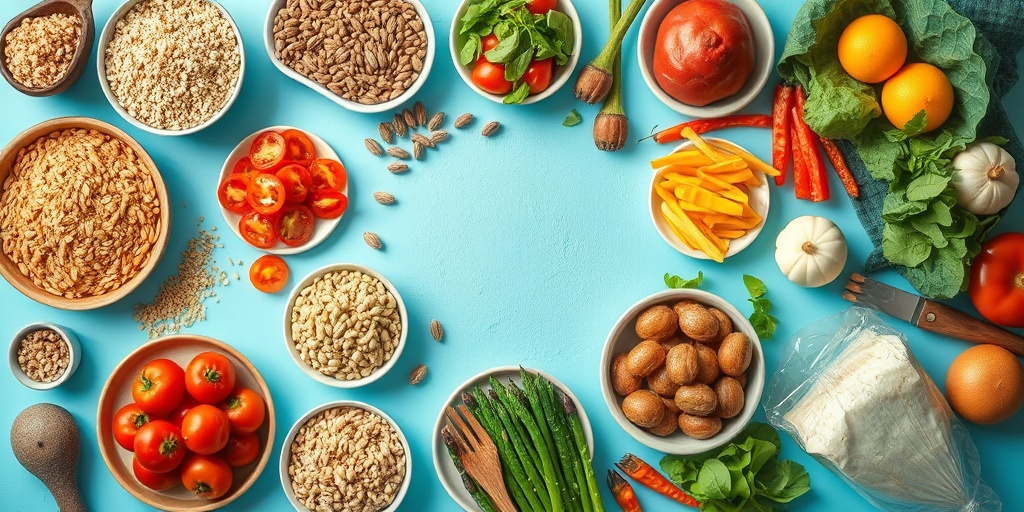
Essential Nutrients for Children
Ensuring that children receive the right nutrients is crucial for their growth, development, and overall health. A balanced diet rich in essential nutrients lays the foundation for a healthy lifestyle. Here are some key nutrients that should be included in children’s healthy eating plans:
1. Protein
Protein is vital for growth and development, as it helps build and repair tissues. Children need adequate protein to support their rapidly growing bodies. Good sources of protein include:
- Lean meats (chicken, turkey, beef)
- Fish (salmon, tuna)
- Eggs
- Dairy products (milk, yogurt, cheese)
- Legumes (beans, lentils, chickpeas)
2. Carbohydrates
Carbohydrates are the body’s primary source of energy. They are essential for active children who need fuel for their daily activities. Focus on providing complex carbohydrates, which are found in:
- Whole grains (brown rice, whole wheat bread, oats)
- Fruits (bananas, apples, berries)
- Vegetables (sweet potatoes, carrots, broccoli)
3. Healthy Fats
Healthy fats are important for brain development and overall health. They help absorb fat-soluble vitamins (A, D, E, and K). Include sources of healthy fats such as:
- Avocados 🥑
- Nuts and seeds (almonds, walnuts, chia seeds)
- Olive oil and other healthy oils
- Fatty fish (mackerel, sardines)
4. Vitamins and Minerals
Vitamins and minerals play a crucial role in various bodily functions. Here are some important ones for children:
- Calcium: Essential for strong bones and teeth. Found in dairy products, leafy greens, and fortified foods.
- Iron: Important for healthy blood and energy levels. Sources include red meat, beans, and fortified cereals.
- Vitamin D: Supports bone health and immune function. Can be obtained from sunlight, fatty fish, and fortified foods.
- Vitamin A: Crucial for vision and immune health. Found in carrots, sweet potatoes, and spinach.
Healthy Meal Ideas
Creating children’s healthy eating meals can be both fun and delicious! Here are some nutritious meal ideas that are sure to please even the pickiest eaters:
1. Breakfast Ideas
- Oatmeal with Fruits: Start the day with a warm bowl of oatmeal topped with fresh fruits like bananas or berries. Add a sprinkle of nuts for extra crunch!
- Egg Muffins: Whisk eggs with diced vegetables and cheese, pour into muffin tins, and bake for a protein-packed breakfast on the go.
- Smoothie Bowls: Blend spinach, banana, and yogurt, then top with granola, seeds, and sliced fruits for a colorful and nutritious breakfast.
2. Lunch Ideas
- Whole Grain Wraps: Fill whole grain wraps with lean turkey, lettuce, tomatoes, and hummus for a satisfying lunch.
- Quinoa Salad: Combine cooked quinoa with diced vegetables, beans, and a light dressing for a refreshing and filling meal.
- Vegetable Soup: A hearty vegetable soup packed with nutrients can be a comforting and healthy lunch option.
3. Snack Ideas
- Fruit and Nut Butter: Slices of apple or banana with almond or peanut butter make for a tasty and nutritious snack.
- Yogurt Parfaits: Layer yogurt with granola and fruits for a delicious and healthy treat.
- Veggie Sticks with Hummus: Carrot, cucumber, and bell pepper sticks served with hummus are a crunchy and satisfying snack.
4. Dinner Ideas
- Grilled Chicken with Vegetables: Serve grilled chicken breast with a side of roasted vegetables for a balanced dinner.
- Whole Wheat Pasta: Toss whole wheat pasta with marinara sauce, lean ground turkey, and a variety of vegetables.
- Stir-Fried Tofu and Broccoli: A quick stir-fry with tofu, broccoli, and brown rice makes for a nutritious and filling meal.
By incorporating these essential nutrients and meal ideas into your child’s diet, you can help them develop healthy eating habits that will last a lifetime. Remember, making meals fun and engaging can encourage children to try new foods and enjoy a variety of flavors! 🍽️
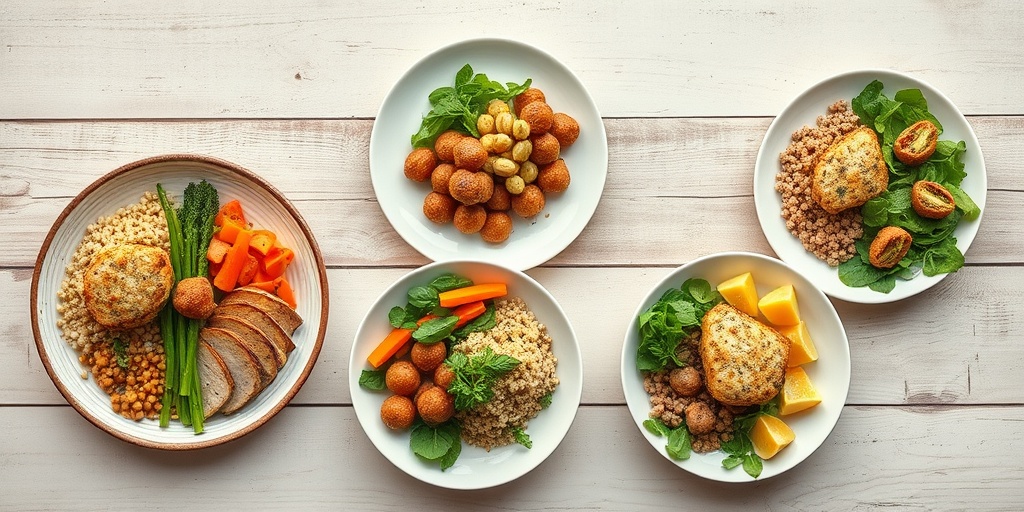
Snacks That Nourish
When it comes to children’s healthy eating, snacks play a crucial role in providing essential nutrients and energy throughout the day. Instead of reaching for sugary treats or processed snacks, consider healthier alternatives that not only satisfy hunger but also contribute to your child’s overall well-being. Here are some nourishing snack ideas that are both delicious and nutritious! 🍏
Fruits and Vegetables: Nature’s Candy
Fruits and vegetables are packed with vitamins, minerals, and fiber, making them an excellent choice for snacks. Here are some fun ways to incorporate them:
- Fruit Kabobs: Skewer a mix of colorful fruits like strawberries, grapes, and melon for a fun and visually appealing snack.
- Veggie Dips: Pair carrot sticks, cucumber slices, and bell pepper strips with hummus or yogurt-based dips for a crunchy treat.
- Frozen Fruit Pops: Blend fruits like bananas and berries with yogurt, pour into molds, and freeze for a refreshing snack on hot days.
Whole Grains: Energy Boosters
Whole grains are an excellent source of energy and can help keep your child full between meals. Consider these options:
- Whole Grain Crackers: Serve with cheese or nut butter for a satisfying snack that combines protein and healthy fats.
- Popcorn: Air-popped popcorn is a whole grain snack that can be seasoned with a sprinkle of nutritional yeast or cinnamon for added flavor.
- Oatmeal Energy Bites: Combine oats, nut butter, honey, and mix-ins like chocolate chips or dried fruit for a quick, no-bake snack.
Dairy and Alternatives: Calcium-Rich Choices
Dairy products are important for growing children, providing calcium and protein. Here are some tasty options:
- Yogurt Parfaits: Layer yogurt with granola and fresh fruit for a delicious and nutritious snack.
- Cheese Cubes: Offer a variety of cheese cubes with whole grain crackers for a balanced snack.
- Nut Milk Smoothies: Blend almond or oat milk with fruits and spinach for a creamy, nutrient-packed drink.
Involving Kids in Meal Prep
Getting children involved in meal preparation is a fantastic way to encourage healthy eating habits. When kids participate in cooking, they are more likely to try new foods and develop a positive relationship with healthy eating. Here are some engaging ways to involve your little chefs in the kitchen! 👩🍳👨🍳
Make It Fun with Cooking Activities
Transform meal prep into a fun activity that your kids will look forward to. Here are some ideas:
- Theme Nights: Create themed dinner nights where kids can help choose recipes and set the table according to the theme.
- Gardening Together: If you have space, start a small garden where kids can grow their own vegetables and herbs. This hands-on experience can spark their interest in cooking.
- Cooking Classes: Enroll in family cooking classes where everyone can learn new skills together while preparing healthy meals.
Assign Age-Appropriate Tasks
Depending on their age, children can take on various responsibilities in the kitchen:
- Young Kids (Ages 3-5): Let them wash fruits and vegetables, mix ingredients, or set the table.
- Older Kids (Ages 6-10): They can help with measuring ingredients, stirring, and even simple chopping tasks with supervision.
- Teens (Ages 11+): Encourage them to plan a meal, create a shopping list, and cook a dish independently.
Encourage Creativity and Exploration
Allowing children to experiment in the kitchen can lead to exciting discoveries:
- Recipe Modifications: Encourage kids to modify recipes by adding their favorite ingredients or substituting healthier options.
- Taste Tests: Organize taste tests with different fruits, vegetables, or whole grains to find out what they enjoy the most.
- Food Art: Let them create fun shapes or designs with their food, making healthy eating visually appealing.
By involving kids in meal prep, you not only teach them valuable cooking skills but also instill a sense of pride in their food choices. This hands-on approach can significantly contribute to their healthy eating habits and overall well-being. 🌟

Overcoming Picky Eating
Picky eating is a common challenge many parents face when it comes to children’s healthy eating. It can be frustrating when your little ones refuse to try new foods or stick to a limited selection. However, with the right strategies, you can help your child develop a more adventurous palate and embrace a variety of nutritious foods. Here are some effective tips to overcome picky eating:
1. Make Mealtime Fun
Transforming mealtime into a fun experience can encourage children to try new foods. Here are some ideas:
- Colorful Plates: Use a variety of colorful fruits and vegetables to make the plate visually appealing.
- Food Art: Create fun shapes or characters with food. For example, use cucumber slices for eyes and a cherry tomato for a nose.
- Involve Them: Let your children help in the kitchen. They are more likely to eat what they’ve helped prepare!
2. Introduce New Foods Gradually
Instead of overwhelming your child with a completely new dish, introduce new foods gradually. Pair a new food with a familiar favorite. For instance, if your child loves pasta, try adding a small amount of sautéed spinach or broccoli to the dish. This way, they can explore new flavors without feeling pressured.
3. Be a Role Model
Children often mimic the behavior of adults. By demonstrating healthy eating habits, you can encourage your child to follow suit. Make sure to:
- Eat Together: Share meals as a family whenever possible. This creates a positive eating environment.
- Show Enthusiasm: Express excitement about trying new foods. Your enthusiasm can be contagious!
4. Offer Choices
Giving children choices can empower them and reduce resistance. Instead of asking, “Do you want broccoli?” try asking, “Would you like broccoli or carrots with your dinner?” This way, they feel involved in the decision-making process.
5. Be Patient and Persistent
It’s important to remember that developing a taste for new foods takes time. Don’t be discouraged by initial refusals. Keep offering the food without pressure, and celebrate small victories when they do try something new!
Creating a Balanced Plate
Creating a balanced plate is essential for ensuring that your child receives all the necessary nutrients for growth and development. A well-balanced meal includes a variety of food groups, which can be visually represented through the children’s healthy eating plate. Here’s how to create a balanced plate for your child:
1. Understand the Food Groups
The foundation of a balanced plate includes:
- Fruits and Vegetables: Aim for half the plate to be filled with colorful fruits and vegetables. They are rich in vitamins, minerals, and fiber.
- Whole Grains: Include whole grains like brown rice, quinoa, or whole-grain bread. These provide energy and essential nutrients.
- Protein: Incorporate lean proteins such as chicken, fish, beans, or tofu. Protein is vital for growth and muscle development.
- Dairy: Offer low-fat or fat-free dairy options like milk, yogurt, or cheese for calcium and vitamin D.
2. Portion Control
Teaching children about portion sizes is crucial. Use smaller plates to help them understand appropriate serving sizes. Encourage them to listen to their bodies and eat until they are satisfied, not stuffed.
3. Make Healthy Swaps
When preparing meals, consider making healthier swaps. For example:
- Use whole grain pasta instead of regular pasta.
- Opt for baked instead of fried foods.
- Choose fresh fruit over sugary snacks.
4. Plan Meals Together
Involving your child in meal planning can make them more excited about eating healthy. Sit down together and discuss what meals they would like to try. This not only teaches them about children’s healthy eating habits but also gives them a sense of ownership over their food choices.
5. Use Visual Aids
Consider using a children’s healthy eating poster in your kitchen. Visual aids can help children understand the different food groups and the importance of a balanced diet. You can find colorful charts that illustrate the ideal plate composition, making it easier for them to grasp the concept.
By implementing these strategies, you can help your child develop a positive relationship with food and establish lifelong healthy eating habits. Remember, the goal is to create a supportive environment that encourages exploration and enjoyment of nutritious foods! 🍏🥦
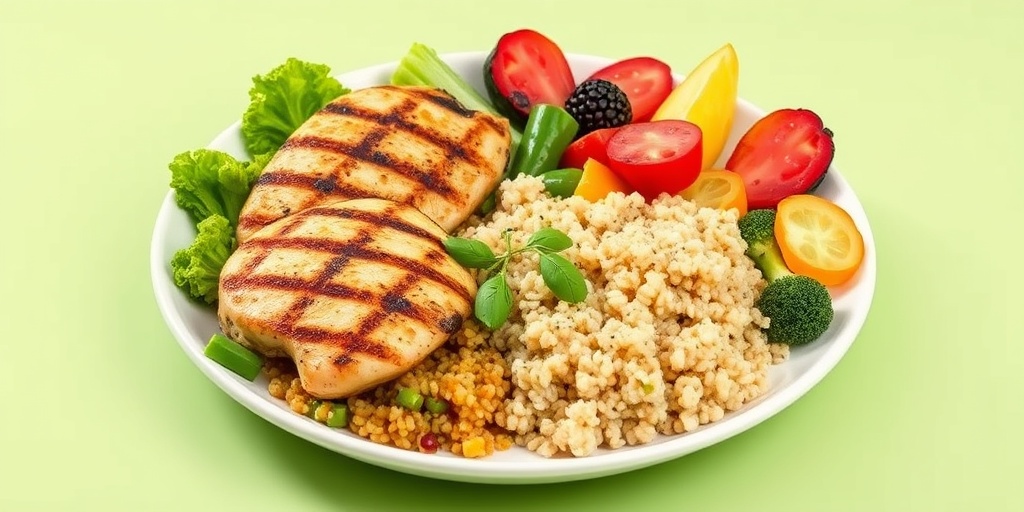
Frequently Asked Questions about Children’s Healthy Eating
What are the guidelines for children’s healthy eating?
Children’s healthy eating guidelines emphasize a balanced diet that includes a variety of foods from all food groups. This includes:
- Fruits and Vegetables: Aim for at least five portions a day.
- Whole Grains: Choose whole grain bread, pasta, and rice.
- Protein: Include lean meats, fish, eggs, beans, and nuts.
- Dairy: Opt for low-fat or fat-free dairy products.
How can I create a children’s healthy eating plate?
A children’s healthy eating plate can be divided into sections to represent different food groups. Here’s a simple way to visualize it:
- Half the Plate: Fill with fruits and vegetables.
- One Quarter: Include whole grains.
- One Quarter: Add a source of protein.
This method helps children understand portion sizes and the importance of a balanced diet. 🍽️
What are some good habits for children’s healthy eating?
Encouraging healthy eating habits in children can set the foundation for a lifetime of good nutrition. Here are some tips:
- Involve Them: Let children help in meal planning and preparation.
- Be a Role Model: Demonstrate healthy eating habits yourself.
- Make it Fun: Use colorful plates and creative presentations.
- Limit Sugary Snacks: Offer healthier alternatives like fruits or yogurt.
Are there children’s healthy eating activities I can do?
Yes! Engaging children in fun activities can promote healthy eating. Consider these ideas:
- Cooking Classes: Teach them how to prepare simple, healthy meals.
- Gardening: Grow fruits and vegetables together.
- Food Art: Create fun shapes and designs with healthy foods.
Can you recommend any children’s healthy eating books?
There are many wonderful books that can help children learn about healthy eating. Some popular titles include:
- The Very Hungry Caterpillar by Eric Carle
- Green Eggs and Ham by Dr. Seuss
- Eating the Alphabet by Lois Ehlert
Where can I find a children’s healthy eating poster?
You can find children’s healthy eating posters at local schools, community centers, or online. Websites like educational resource sites often offer free printable posters that illustrate healthy eating habits. 🖼️
What is a good children’s healthy eating plan?
A children’s healthy eating plan should include a variety of foods and regular meal times. Here’s a simple weekly plan:
- Breakfast: Whole grain cereal with fruit.
- Lunch: Turkey sandwich with veggies.
- Dinner: Grilled chicken with brown rice and steamed broccoli.
- Snacks: Yogurt, nuts, or fresh fruit.
Is there a children’s healthy eating chart available?
Yes, many resources provide children’s healthy eating charts that outline daily food group recommendations. These charts can be found online or through health organizations like the NHS. 📊
How does the NHS support children’s healthy eating?
The NHS offers various resources and guidelines to help parents promote children’s healthy eating. They provide information on nutrition, meal planning, and tips for encouraging healthy habits in children.

